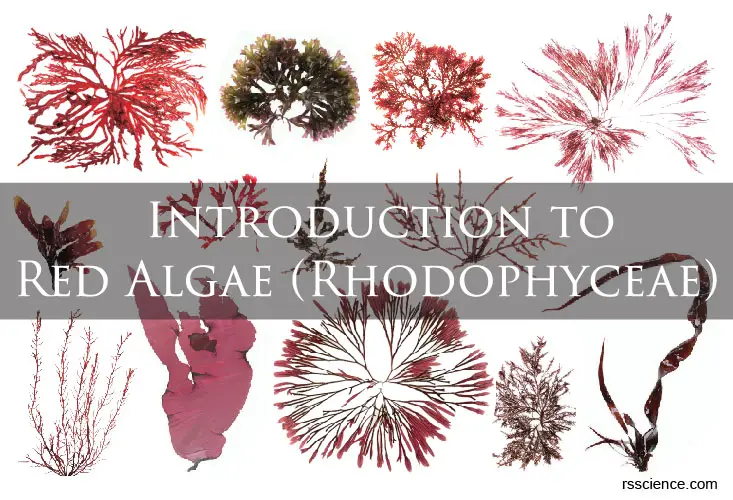The beauty of red algae is often overlooked. This is the article, you will have a tour of a tide pool and learn the biology of this amazing seaweed under the microscope!
This article covers
What are Algae?
Algae (singular, alga) are a general term for a large and diverse group of eukaryotic organisms that are capable of photosynthesis. Algae include unicellular microalgae, such as the Diatoms and Chlorella, and multicellular algae, such as seaweeds that may reach 60 m in length and form underwater kelp forests.
Depending on the color, algae could be roughly classified into green, brown, and red algae.
What are Red Algae?
The red algae include some of the most delicate and beautiful seaweed you can find in a tide pool. The red color of these algae results from their red pigments – phycobilins, which are absent in green algae.
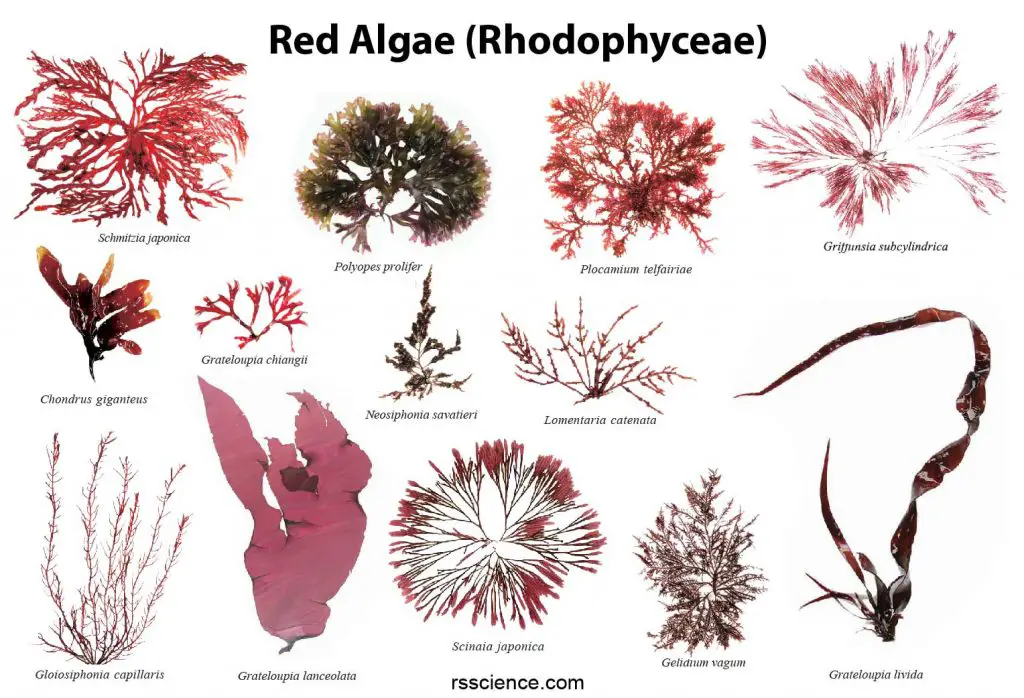
[In this image] The variety of red algae (Rhodophyta).
Photo credit: Modified from Yukihiko Serisawa’s article.
These common red algae you could find belong to a division called Rhodophyta. The name, Rhodophyta, came from Ancient Greek as Rhodo = “rose” and phyta = “plant”. Rhodophyta covers more than 7,000 species, and most of them are predominantly marine algae. Most red algae are also multicellular organisms. They display a variety of morphology, ranging from filamentous, branched, feathered, and sheetlike thalli. Red algae can reproduce sexually.
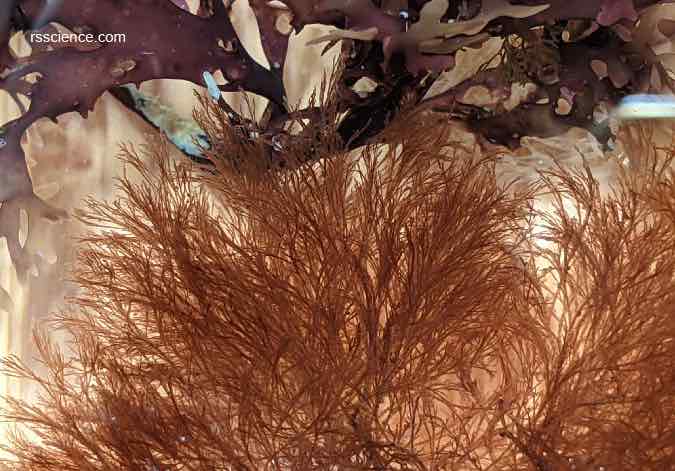
[In this image] Two kinds of red algae we found on the New Hampshire coastline.
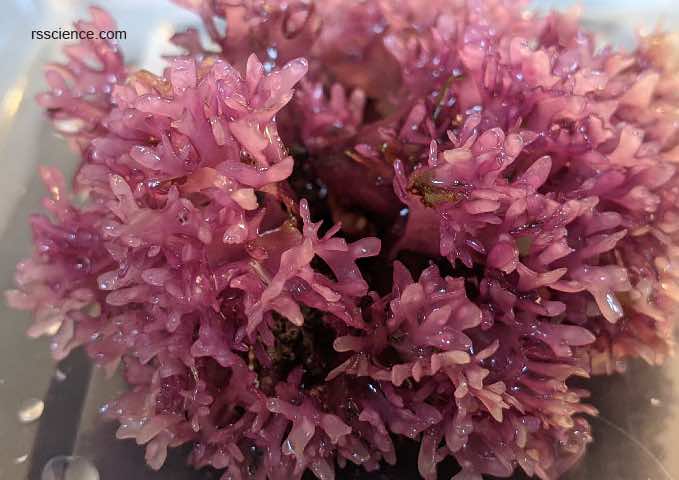
[In this image] A bunch of Irish moss, a small reddish-purple, fan-shaped seaweed.
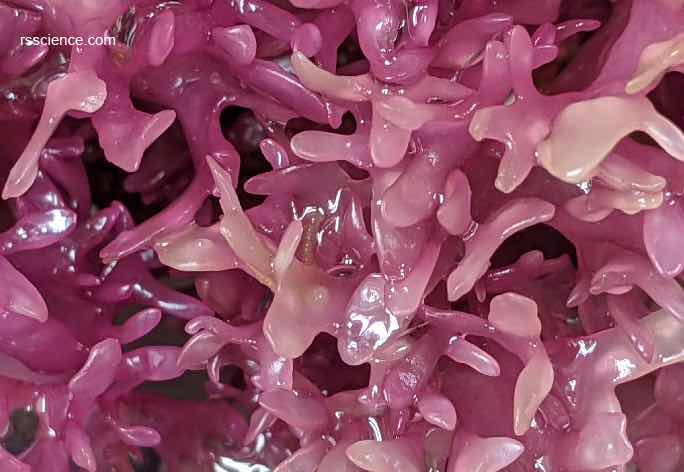
[In this image] Look closer and you can see the Irish moss also has bladder-like bumps on its fan.
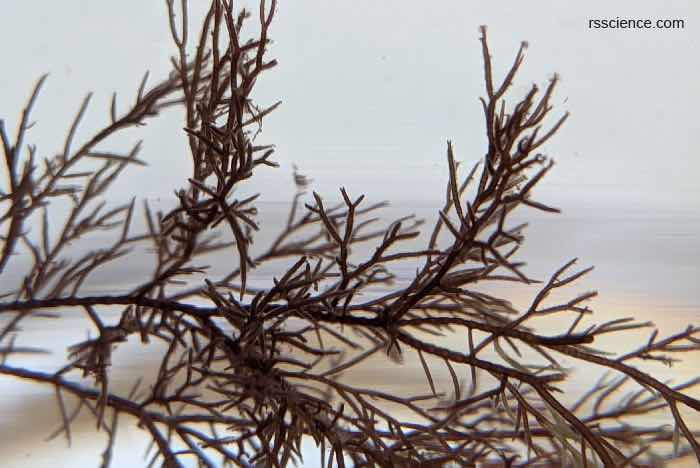
[In this image] Coral week, another kind of red algae, although it appears in brown color.
The members of Rhodophyta are not always in red color. Some species may appear greener or brown-ish due to pigment contents. The same Rhodophyta plants could also look very different in their color, shape, and size. Many environmental factors, including temperature, sunlight, nutrients, salinity, and ocean waves, can affect the appearance of red algae. This makes the identification of red algae mush difficult than real plants.
The importance of red algae
Red algae are the critical food source for many marine animals.
Coralline algae are a special group of red algae which play a major role in building coral reefs. They are characterized by secreting calcium carbonate (CaCO3) as a part of their cell walls. These calcareous depositions harden to become a rock-like substance, which acts as the foundation for coral reefs to grow. Sea urchins, parrot fishes, limpets, and chitons also feed on coralline algae. Some islands were formed by the deposition of coralline algae and corals over million years!
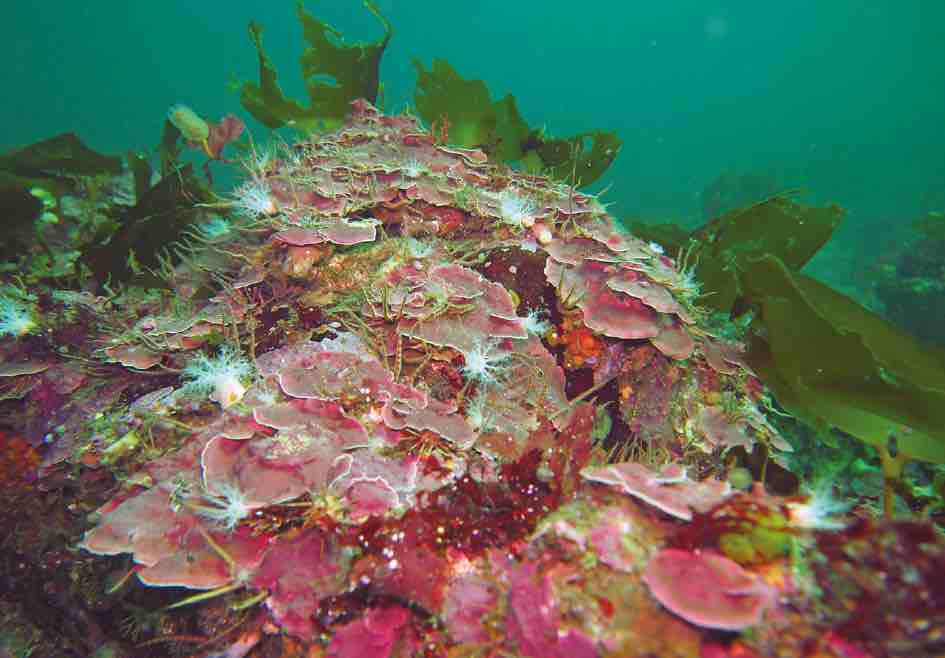
[In this image] Coralline algae.
Photo credit: wiki
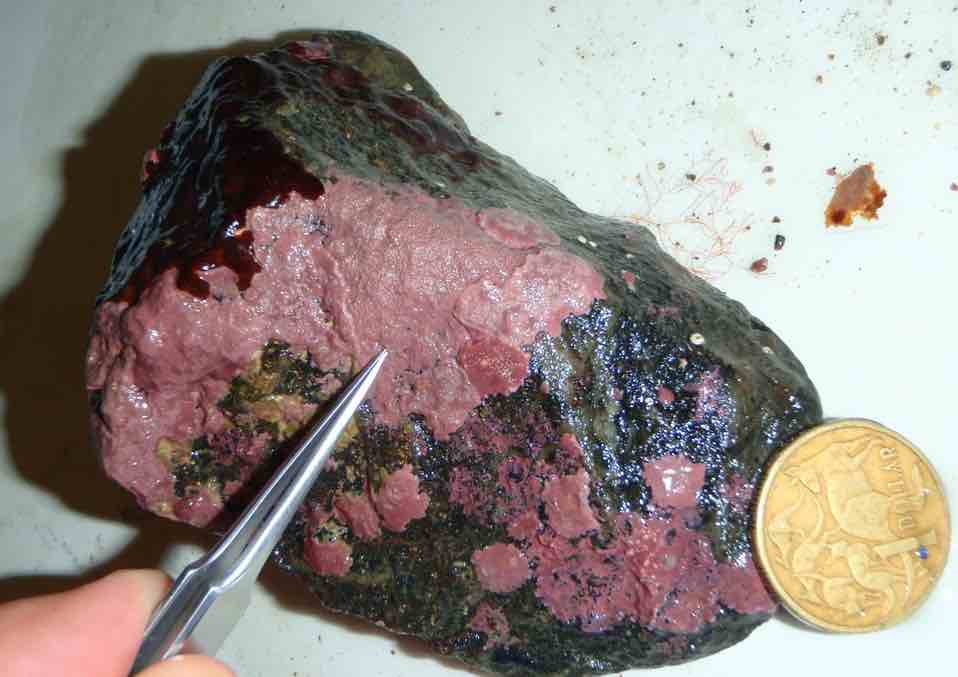
[In this image] Coralline algae forming pinkish blotches on a rock.
Photo credit: iNaturalist
Some red algae, such as dulse and laver, appear commonly in Mediterranean and Asian cuisines. Their gel-like substance (carrageenans, usually from Irish moss) can be harvested as food additives to make puddings, toothpaste, ice cream, and preserves. Agar, a gelatin-like substance prepared primarily from Gracilaria and Gelidium species, is important as a culture medium for bacteria, fungi, and plant tissue culture.
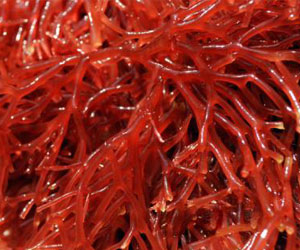
[In this image] Gelatin substitutes can be extracted from red algae to make agar and carrageenans.
Structure of red algae thalli
Red algae have a diverse range of morphologies. They can be unicellular or multicellular. Multicellular red algae can be filamentous, leafy, or sheet-like. You may find some red algae (seaweeds) look like a bush of grasses or succulents; however, red algae don’t have structures, such as leaves, stems, and roots as land plants.
We often use the term “Thallus (plural: thalli)” to describe a plant body that is not differentiated into stem and leaves and lacks true roots and a vascular system. Algae, fungi, lichens, and some liverworts are typical thalli.
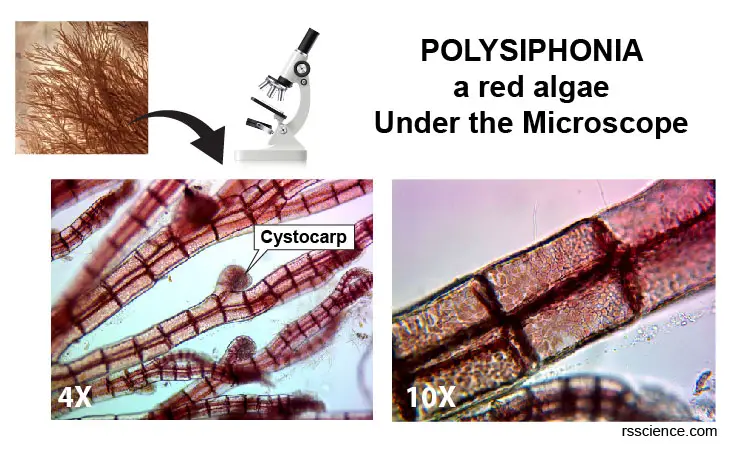
[In this image] Observe the silky red algae (Polysiphonia sp.) under a compound microscope.
Each “branch” consists of an axis of elongated cells, called the central axis. Every cell of this axis is surrounded by a ring of cells (ranging from 4-24), called the periaxial cells. This structure gives Polysiphonia a bamboo-like segmented appearance. The bumps growing on the branches, called cystocarps, are the reproductive organ of red algae. Cystocarps can produce carpospores.
The leafy parts of seaweed are called blades. They are not leaves because they do not have veins like the leaves of true plants. Red algae do not have roots. They absorb water and nutrients directly from the surrounding water. Some species of seaweeds may have a structure (called a holdfast) that acts like roots, allowing them to remain fastened to the sea floor or rocks. Some seaweeds have a stem-like structure (called a stipe), which connects the holdfast to the blades. It is not a true stem because it does not have vascular tissue (such as xylem and phloem) in it.
Observing red algae under the microscope – Cell structure
Cell wall
Red algae have double cell walls. The outer layers contain the polysaccharides (complex sugars) – agarose and agaropectin that can be extracted from the cell walls to make agar. The internal walls are mostly cellulose (like normal plant cells’ cell walls).
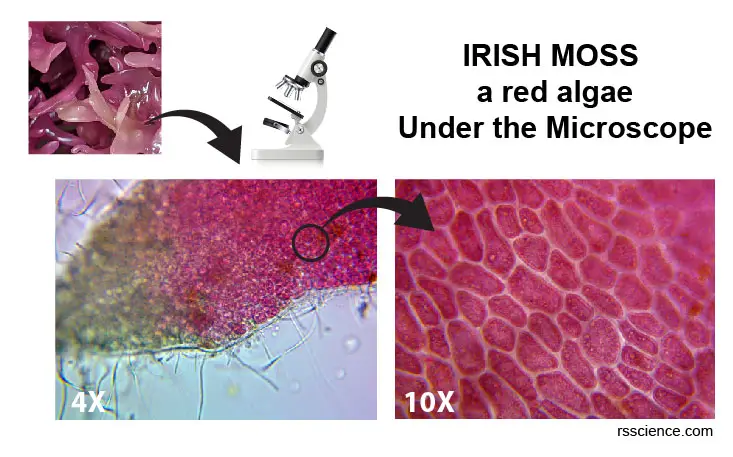
[In this image] Look at a piece of Irish moss under a compound microscope.
Under the 10x objective lens, you can see many red alga cells separated by white boundaries (cell walls). Inside each cell is packed by many red pigment granules (their chloroplasts) which make the algae look red.
Chloroplasts
Red algae have chloroplasts; however, their chloroplasts are different from chloroplasts in plant cells. Rad algae’s chloroplasts contain chlorophyll a, but not b. Instead, abundant amounts of phycobilins (a group of red pigments) dominate in their chloroplasts, giving red algae their distinctive color.
This red pigment is very well suited to absorb the green and blue-green light in deeper sea water. The ability to utilize these spectra of light more efficiently allows red algae to inhabit greater ocean depths than other algae.
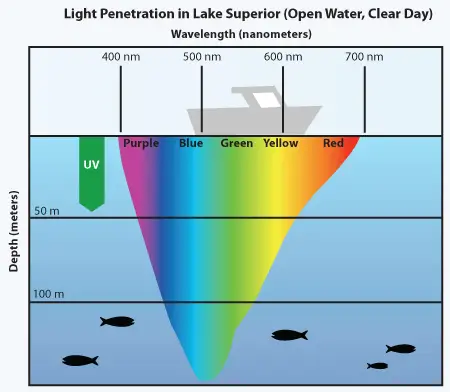
[In this image] Visible colors of light penetrate into the ocean depths differently.
Longer wavelengths such as red are absorbed in a shallower depth than shorter wavelengths such as blue, which penetrates to a deeper depth.
Photo credit: University of Minnesota Sea Grant Program
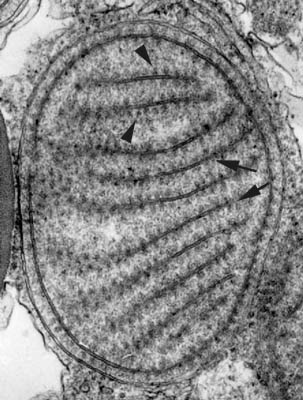
[In this image] An electron micrograph showing a red alga chloroplast.
Red alga chloroplast has unstacked photosynthetic lamellae (arrows) bearing granules, called phycobilisomes (arrowheads), composed of water-soluble phycobilin pigments.
Photo credit: Tree of life web projects
By studying red algae, scientists may have a clue of how early life evolved. Red algae’s unique chloroplasts suggest they were evolved following an endosymbiotic event between an ancestral, photosynthetic cyanobacterium and an early eukaryotic cell.
Floridean starch
Photosynthetic products produced by red alga chloroplasts will be packed into floridean starch granules for long-term storage.
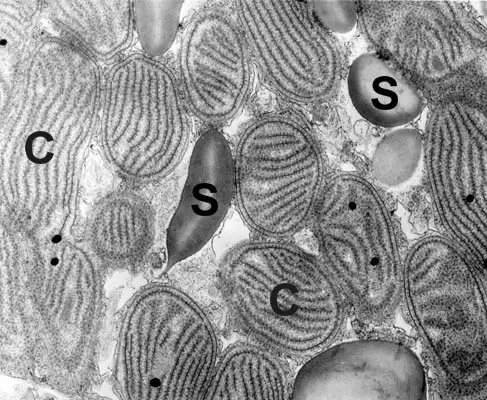
[In this image] This electron microscopic image showing the chloroplasts (C) and starch granules (S) in a red alga cell.
Photo credit: Tree of life web projects
Pit connections and pit plugs
Pit connections and pit plugs are unique features of red algae. When cells divide in red algae, the process of cytokinesis following mitosis is incomplete. A small pore is left in between two daughter cells. This pit connection keeps two cells sharing their cytoplasm for a short period of time until the generation of a pit plug, which blocks this pore.
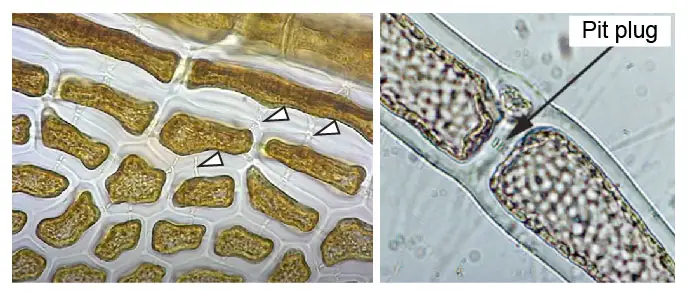
[In this image] Left: Pit connections (white arrowheads) are channels connecting two adjacent red alga cells. Right: Pit plug formed to block these connections.
Photo credit: Modified from https://www.youtube.com/watch?v=bFGQmdkiMBk
Reproduction of red algae
The sexual reproduction of red algae is a complicated process.
Depending on the number of copies of chromosomes, the life cycle of red algae (Polysiphonia sp. as an example) can be divided into two parts.
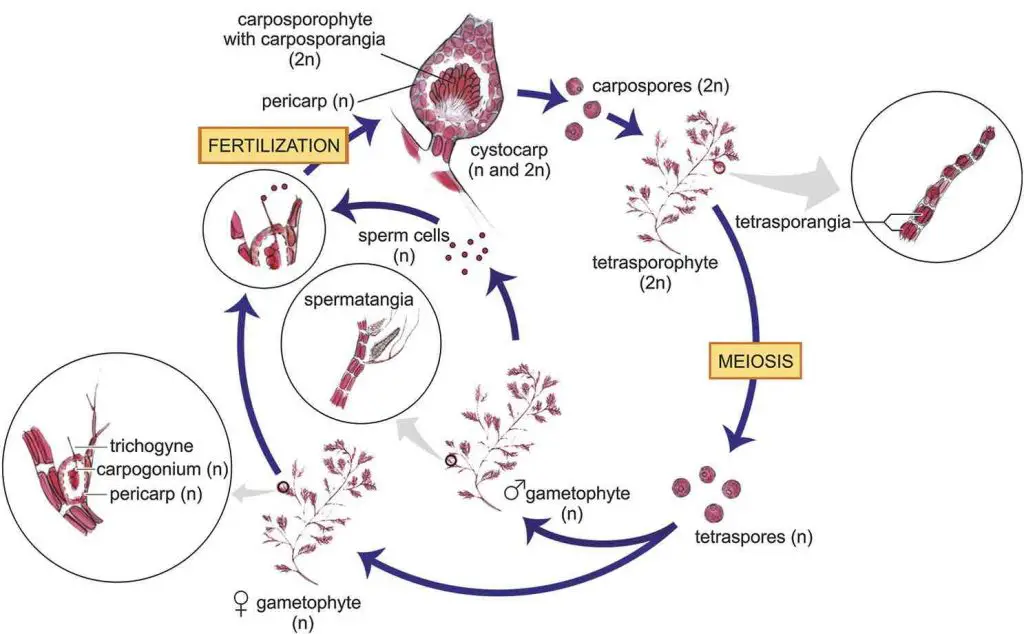
[In this image] Red algae have a complicated life cycle.
Photo credit: cambridge.org
Small Polysiphonia thalli with the normal amount of chromosomes (2n) are called tetrasporophytes. A tetrasporophyte will go through meiosis to produce four tetraspores, which have only half the number of chromosomes (n). These spores can grow into male and female algae (called gametophytes, also n).

[In this image] The formation of tetraspores inside tetrasporophytes.
Photo credit: microscopy-uk
Tetrasporophytes and gametophytes may look identical, apart from their reproductive organs. On the top of male gametophytes’ branches, there are male reproductive organs, called spermatangia, which produce sperm cells (spermatia). However, red algae’s sperm cells don’t have flagella, making them not capable to swim. If these spermatia are luckily carried by water currents to the female reproductive organ, the carpogonium, the sperm will fertilize the egg. The fertilization (spermatia and egg cells) brings the two half parts of chromosomes together, generating a zygote (2n).
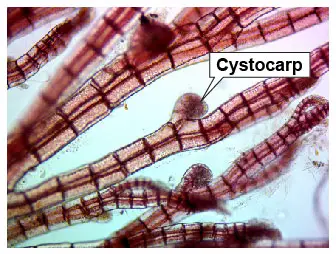
[In this image] Cystocarps grow on the branches of Polysiphonia sp.
The zygote will develop into a cystocarp. In the cystocarp (like a sac), carpospores are formed (with 2n chromosomes), which can escape through a hole at the top and can grow into a new tetrasporophyte. Later, it will start a new cycle, again.
Fun science activity – Algae Pressing
Algae pressing is a way to preserve algal specimens for observing their features. Algae pressing is very similar to the techniques used to press flowers. It can be a fun art project to make a seaweed collection or picture by pressing different species together. Scientists also use algae pressing to document each seaweed species for their research.
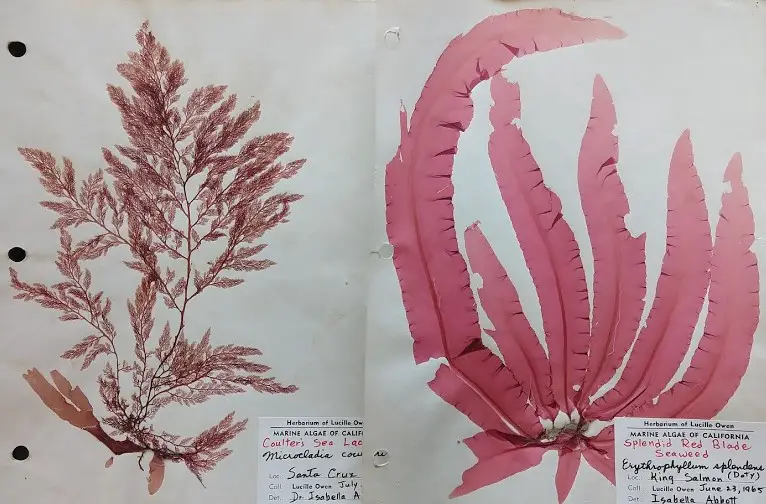
[In this image] Two examples of pressed red algae.
Photo credit: Biology LibreTexts
You don’t need special apparatuses for algae pressing. Follow these steps to make your first algae pressing.
Algae Pressing
- Collect your algae in a container with fresh seawater.
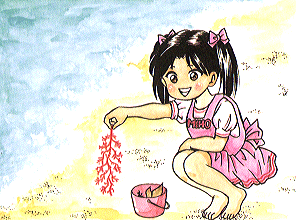
- Prepare a large tray filled with clean water.
Put a piece of Herbarium paper in the water (100% Rag Herbarium paper is recommended so it will not yellow with time). Carefully lay out your specimen by floating it over the paper. Then, gently lift the paper out of the water or tilt the paper so the water runs off and the specimen stays behind. This technique helps to prevent the branches from crumpling together for delicate finely branched seaweeds. You can also separate branches with a paintbrush, toothpick, or tweezers.
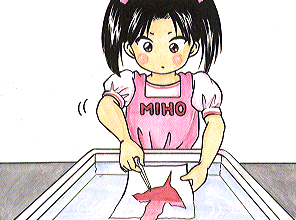
- Arrange your specimen in a stack to wick water away and dry them.
Place a sheet of waxed paper over the seaweed (crumpling the wax paper and then smoothing it out over the seaweed can prevent from sticking of the two). Sandwich the specimen with layers of blotters (like newspapers) on a flat surface. You can press multiple specimens within a press; just layer them between layers of newspaper or blotter paper.
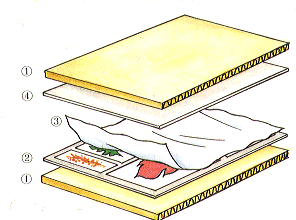
- Place a heavy weight (could be a pile of books or bricks) on top to flatten plants.
Dry the stack with airflow to avoid mildew. Check your specimen every other day until it is pressed and dry. It may be necessary to change the newspaper if it gets very wet to prevent mold growth.
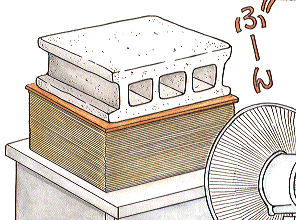
- Remove the pressed specimen from the press and carefully peel off the waxed paper.
If the specimen comes loose from the Herbarium paper, you can secure it with a small drop of glue.
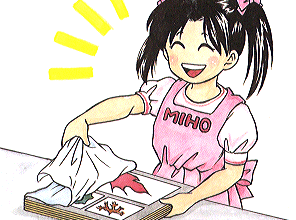
- Label the pressed specimen with your name, the date, the identity of the seaweed, and the location and habitat where it was collected.

Note: Choose a specimen that is large enough to easily identify, but thin enough that can compress into a flat shape. You may need to prune the bush-like algae before pressing.
Photo credit: Univ. Tsukuba
Summary
1. Red algae (or Rhodophyta) are abundant in marine habitats but are relatively rare in freshwater.
2. Red algae play an important role in the ocean ecosystem. Many marine animals feed on red algae. We also harvest red algae as food items and extract ingredients like carrageenans and agar from them.
3. Coralline algae can produce rock-like depositions to act as the foundation of coral reefs.
4. Red algae don’t have real leaves, vascular stems, and roofs like land plants.
5. Red algae have two layers of cell walls.
6. Red algae have unique chloroplasts and contain abundant amounts of red pigment – phycobilins, which give rise to their distinctive red color.
7. Try Algae Pressing – you will find it as a fun DIY pastime.
References
“A list of marine algae from Hamatome, Shizuoka Prefecture, central Japan”
“POLYSIPHONIA, a red algae” by Jan Parmentier

